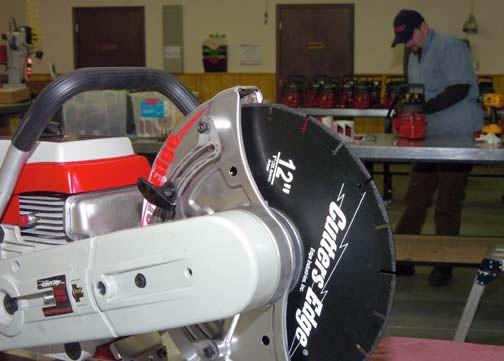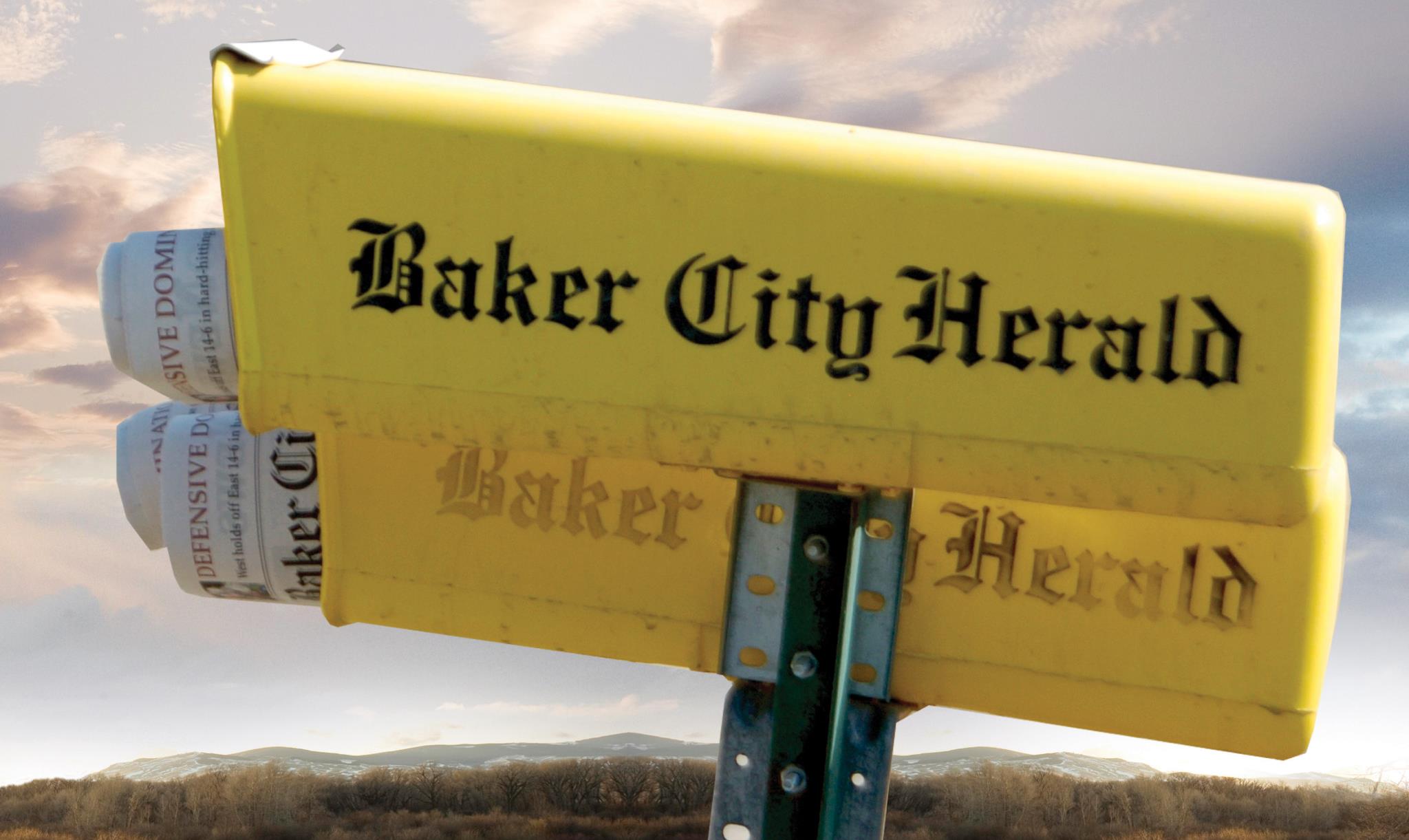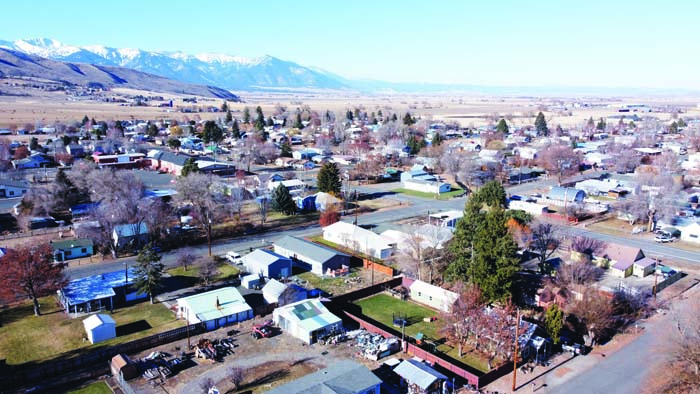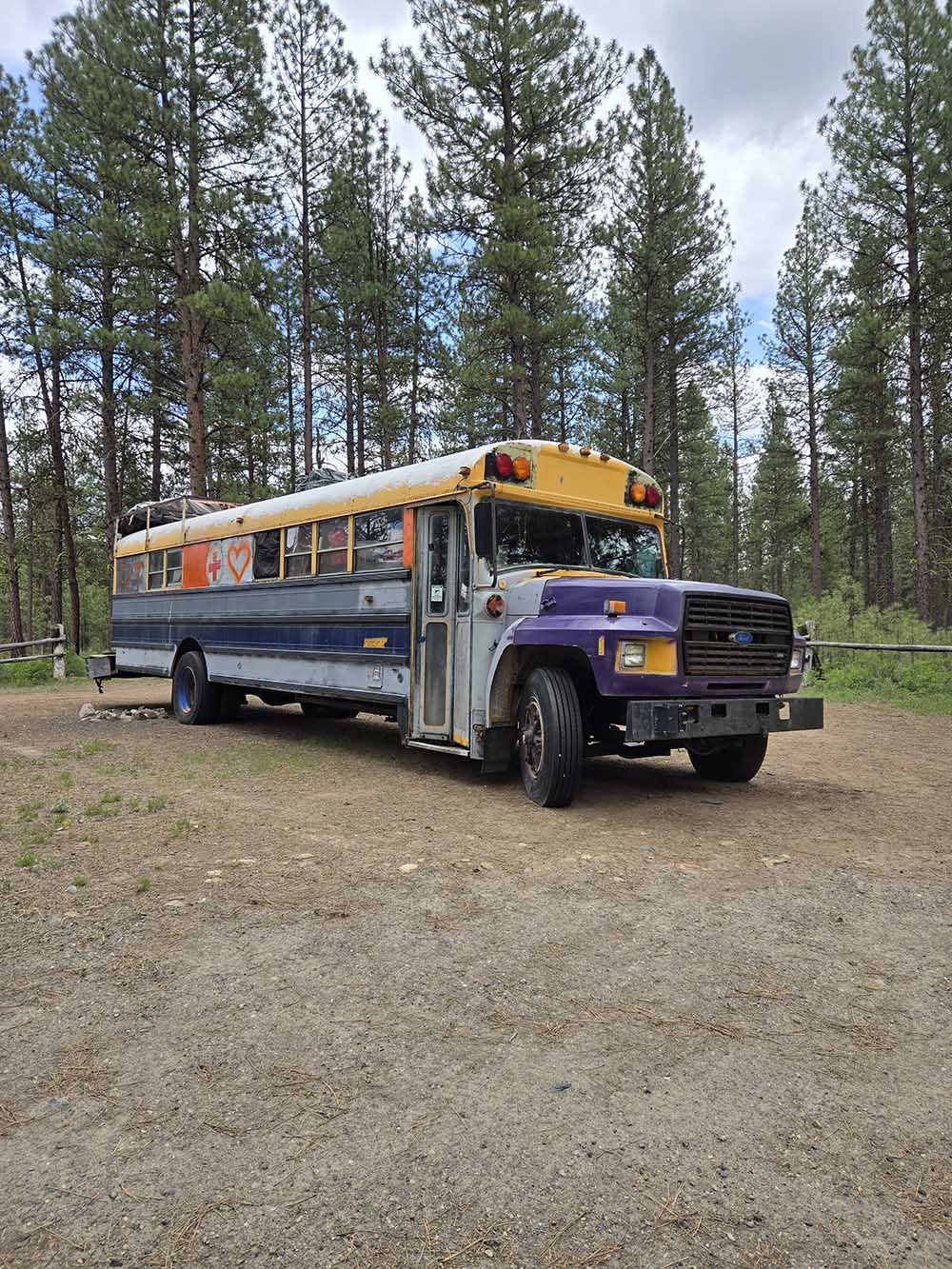New firm puts Baker City on the cutting edge
Published 11:32 am Thursday, March 12, 2009

- Cutters Edge is making three types of fire rescue saws at the Baker City plant. The Rotary Saw, above, is the workhorse that will cut through practically anything from nails embedded in oak to guard rails and boiler plates, according to Mike Reid, an employee who transferred from the companyâs California plant to Baker City. Steve Brown, background, assembles a Multi Saw. (Baker City Herald/S. John Collins)
Cutters Edge, which makes saws used by firefighters and the military, opened a factory in Baker City in early January
At the new Cutters Edge world headquarters in Baker City, Tom Ruzich
said the staff of 11 is keeping busy despite the global recession
that’s hit many of the countries where his emergency rescue saws are
sold.
Ruzich, president and founder of Cutters Edge, said he and five
employees who made the move in mid-December from sunny Southern
California to Baker County’s winter wonderland are looking forward to
spring after enduring what he’s been told was one of the four worst
winters Baker County has experienced in years.
The cold weather caused some problems with the move and slowed
shipments down a bit as most of the California transplants, and even
some workers hired locally, logged some sick time.
But Ruzich said employees at the Baker City plant worked through those troubles and kept up with assembly of saws to meet the growing military demand in Iraq, as well as increasing sales to Japan, Canada, China and India.
The plant is in the Elkhorn View Industrial Park in northwest Baker City, near Behlen Mfg. and OTEC.
“The quality of the labor pool has improved dramatically in Baker City, compared to what we had in Julian,” Ruzich said. “Julian is a tourist town of 2,500 in the mountains east of San Diego, and the picking got pretty slim as far as the type of people needed to do manufacturing.”
That’s definitely has not been a problem in Baker City since the plant opened here on Jan. 3, he said.
After being evacuated four times in one summer, and seeing 124 of 128 homes burned by a wildfire that swept through the nearby town of Cuiamaca where he lived, Ruzich said he went looking for a more stable environment to relocate his business. He wound up choosing Baker City as the best of all places he visited.
“Coming here created a stability I could rely on for our infrastructure,” Ruzich said, adding that wildfires had become such a threat in Southern California that he came to believe it was just a matter of time before one hit his plant in Julian.
He said he liked what he saw in Baker City, liked what he learned about the quality of the workforce, the quality of life, the outdoor recreation opportunities and the people he met around town, as well as the staff with the Baker city/county economic team.
In fact, he ended up hiring Troy Phillips, who was the economic development recruiter who lured his company to Baker City.
Ruzich said the move to Baker City was the culmination of four years’ planning. That process involved closing a plant in Middleton, Pa., and consolidating the East Coast assembly into the Julian operations. He contracted out service work for the saws sold to fire departments in New York and other East Coast states.
When the Baker City plant was completed, the Julian plant was closed and all of the company’s equipment, vehicles and inventory was packed into four 53-foot moving vans and cargo trailers and moved to the new plant in Baker City.
While some saw components are made elsewhere, Ruzich said all of the assembly work on the saws is done at the Baker City plant.
Phillips said the company manufactures three types of fire rescue saws designed to meet different emergency rescue situations.
Their best-selling fire rescue saw is a multi-purpose chain saw primarily sold to fire departments to cut holes in roofs of homes and buildings to allow potentially explosive gases to ventilate.
The fire rescue chain saws come with a patented bullet chain designed to be used nose first without kicking back, which allows firefighters to cut a vent hole in a roof much faster and safer than is possible with a traditional chain such as the ones used to cut firewood, Phillips said.
“The bullet chain has a carbide tip shaped like a bullet that will cut through wood, sheet metal, asphalt shingles and nails, and most anything else you encounter in a roof,” Phillips said.
Those chain cutters will also slice through concrete and heavy steel in limited use situations, but the company makes other saw models designed specifically for cutting through heavy steel and concrete reinforced with steel rebar in minutes, Phillips said.
The multi-use fire rescue saws used to cut roof ventilation holes and handle other jobs on a fire scene come in two models, the 2165 and the 2171, the latter having a larger engine.
Both are available with a depth gauge, which allows firefighters to set the depth of the saw’s cut so they don’t wind up cutting the rafters and falling through the roof, Phillips said.
The company’s two other types of rescue saws include a concrete-cutting chain saw with a 16-inch bar and a diamond studded chain saw that cuts through concrete like butter. It was been used by rescue crews to extract victims in the federal building bombing in Oklahoma City in April 1995, and in the Sept. 11, 2001 terrorist attacks, he said.
The third type of saw made by Cutters Edge is a circular cutoff saw with diamonds embedded in the blade and a water cooling system that keeps the blade cool and cuts down on concrete or steel dust when it is used to cut through concrete and rebar or reinforced steel such as the bullet-proof steel plating on Humvee armored vehicles used by troops in Iraq.
“This is the saw that’s in the president’s motorcade to cut through armored glass,” Phillips said. “It’s also sold to SWAT teams and to military units. It’s used by the military to extract soldiers from Humvees hit by roadside bombs in Iraq.”
The red power heads for the Cutters Edge saws are manufactured by Jonsered, which is owned by Husqvarna, Phillips said. Workers at the Baker City plant assemble the unique Cutters Edge saw components onto the power heads.
While lagging sales at some other Baker-area manufacturing companies led to layoffs of 160 workers reported by the Oregon Employment Department since the nationwide recession started creeping into Baker County last fall, Ruzich said he’s added five employees, bringing the staff at the new Cutters Edge plant to 11.
Construction of the 11,000-square-foot Cutters Edge assembly plant began last June and was completed in time for the December move from Julian.
About 30 percent of the company’s emergency rescue saws are exported to foreign countries for use by their firefighters, police and military, Ruzich said.
“As yet, we haven’t been affected by the recession, but eventually we probably will,” Ruzich said.
“The big growth engine has been homeland security and governments fighting terrorism,” said Ruzich, who came up with the idea for the unique saw blade designs after working many years as a firefighter. He founded Cutters Edge and started making saws in Southern California in 1984.
In addition to the new manufacturing and assembly plant, the Baker City site includes a separate 1-acre site complete with a two-story, 800-square-foot training building where firefighters and other rescue, police and military staff whose units purchase the saws are brought for training.
Ruzich said he recently completed talks with the city and county fire officials and has agreed to let the city place its two 40-foot fire training trailers purchased with federal Homeland Security funds on the property, where local area fire crews will use them for training.
“We offered to set up their training center here on our one acre,” Ruzich said.





